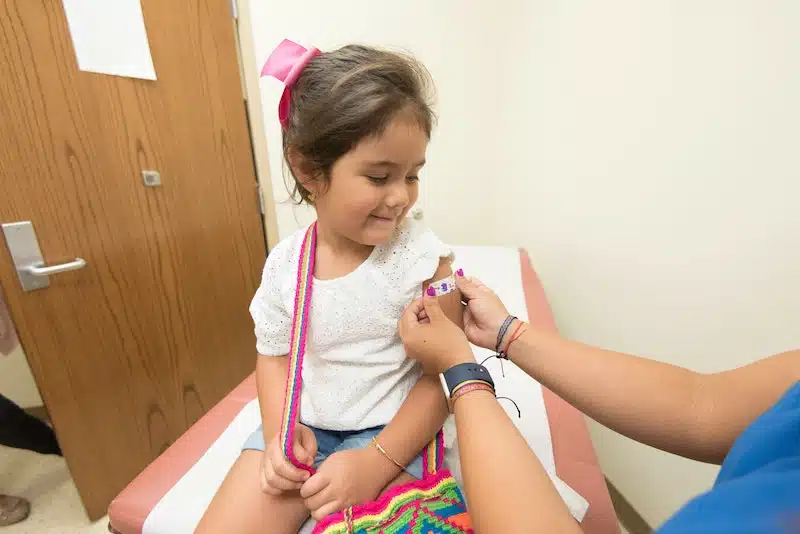Ever had that moment when you felt like your life suddenly became very different from what you expected it to be like? Suddenly, things aren’t so simple.
This is what many parents feel the moment they learn that their child has autism.

Having your little one diagnosed with this developmental disorder can be a decisive moment that could change your life forever. You worry about your child and how your family will adjust to the years ahead.
But while things may seem bleak, learning everything you can about the condition can help you cope with this challenge and make raising your children happy and healthy easier.
This article explains the most important things you need to know about autism, including autism treatment, symptoms, possible causes, and your role as a parent.
What is autism spectrum disorder?
Autism spectrum disorder (ASD) is a developmental condition that comes with difficulties in communication and social interaction and repetitive or restricted behaviors.
Some symptoms related to social interaction and communication include:
- Difficulty sharing interests, expressing emotions, or maintaining an active two-way conversation
- Nonverbal communication issues, like the inability to maintain eye contact or read body language
- Difficulty developing and nurturing relationships
In terms of restrictive or repetitive activities or behaviors, they may exhibit the following symptoms:
- Performing the same actions or speaking in similar speech patterns over and over
- Rigidity in adhering to specific behaviors and routines
- Adverse reactions to specific sounds and other instances of over-sensitivity to sensory information
- Preoccupation or fixated interests
This complex disorder comes with unique challenges for every individual, although the most apparent signs emerge at around two to three years of age. Some children with autism exhibit normal development until toddlerhood, only to lose previously gained skills or stop acquiring new ones.
And while many people with ASD have normal intelligence, others experience intellectual delays – whether minor or significant. Some also have a greater risk of specific medical conditions, like seizures, mental illness, and sleep problems.
Because the symptoms and severity of the condition vary from one person to another, ASD is challenging to diagnose. Children with the condition also have a wide range of characteristics and abilities, making no two individuals behave or appear the same way. Symptoms also often change over time.
What causes ASD?
ASD is a condition that occurs from certain risk factors, although experts have yet to pinpoint its exact cause. According to current studies, there may not be a single direct cause.
The National Institute of Neurological Disorders and Stroke (NINDS) said that both genetics and the environment play a vital role in whether or not a child develops autism.

That said, medical experts believe that combinations of the following risk factors could lead to ASD:
- Genetic mutations
- A direct blood relation to someone with autism
- Exposure to heavy metals and toxins in the environment
- Genetic disorders, like Fragile X Syndrome symptoms
- Lower-than-normal birth weight
- Fetal exposure to thalidomide and valproic acid
- Metabolic imbalance
- Older birth parents
- A past bout with viral infections
Take note that many studies – both old and new – have confirmed that autism is not an adverse effect of vaccines.
What is your role as a parent of a child diagnosed with autism?
As a parent of a child with autism, you might find yourself playing many various roles. You also act as their teacher, care coordinator, and therapist. But most importantly, you become your child’s first advocate.
Advocating for children with autism is a lifelong journey. You’ll need to perform many different types of tasks to accommodate their needs, but the most critical of all is to begin treatment immediately.
Once you notice that something is wrong, don’t wait to see whether your child will outgrow the problem. While children have their own pace in learning, you should not wait for an official diagnosis to lend them a helping hand. For instance, engaging in simple yet effective speech therapy activities at home can foster communication skills and there is no need to wait for an official diagnosis. Encouraging interactive games that involve naming objects or storytelling not only enhances vocabulary but also promotes social interaction.
In today’s progressive approach to therapy, the methods have become more interactive and stress-free for children. Speech and language therapy activities for kids are designed to be enjoyable, often resembling playtime rather than clinical sessions. Interactive apps and games tailored to address specific language challenges are readily accessible, making the learning process engaging and immersive.
When it comes to autism, the earlier help is offered, the higher the chance of the treatment’s success. In other words, early intervention is the best way to speed up your child’s development and give him a better chance of overcoming ASD.
Is there a cure for autism?
There is currently no known cure for ASD. This is why autism treatment focuses on interventions to help young children cope with the condition by:
- Reducing signs and symptoms
- Honing their daily living skills and cognitive ability
- Maximizing their ability to participate in and function as a part of the community
When looking for the best-suited intervention for your little one, keep in mind that what works for one child may not work for yours. Children with autism have individual needs, so you need to look closely at your little one.
Below are some of the most commonly used treatments for ASD:
Occupational Therapy
Occupational therapy (OT) is a treatment that deals primarily with life skills training. It teaches children with autism how to bathe, dress, or feed themselves and connect with other people.
The primary goal of OT is to help a child live as independently as possible despite their condition.
Sensory Integration Therapy
This type of treatment is best for children who have sensory oversensitivity. This will help your child learn how to deal with specific sounds, bright lights, being touched, and other sensory-related situations that make them uncomfortable.

Picture Exchange Communication System (PECS)
Children with ASD symptoms related to communication can also undergo PECS, a visual-based treatment that uses symbols to help them communicate and ask questions.
Developmental, Individual Differences, Relationship-Based Approach (DIR)
Also known as Floortime therapy, this relationship-based treatment entails getting down on the floor with your child to perform activities and play games that they like. It offers children with ASD support for intellectual and emotional growth and expands the “circles of communication.”
Neurofeedback Training
Also called brain training, neurofeedback training can help alleviate symptoms of ASD.
Most children with the condition who undergo this treatment come out calmer than before. Parents also noticed that children don’t get overwhelmed as easily and can manage their emotions better.
After undergoing brain training, they also experienced fewer emotional outbursts, hyperactivity, and impulsivity, and had clearer speech patterns, enhanced relationships, and better social skills.
Autism and You
Having a child with autism can change your life significantly. Understanding what the condition entails is the first step in helping your child cope.
Article written by Dr. Upasana Gala
AUTHOR BIO
Dr. Upasana Gala is the founder and CEO of Evolve Brain Training, an award-winning neurofeedback-centered institute that focuses on using non-invasive brain training techniques to maximize the brain’s true potential. Earning a doctorate in Neuroscience from the revered Baylor College of Medicine, Dr. Gala has spent over a decade trying to unravel the way neurochemical and neurophysiological changes in the brain affect the way we interact with the world. Her goal is to share her knowledge, encourage others to tap into and expand their brain’s capabilities, and dispel any myths surrounding our most complex organ.